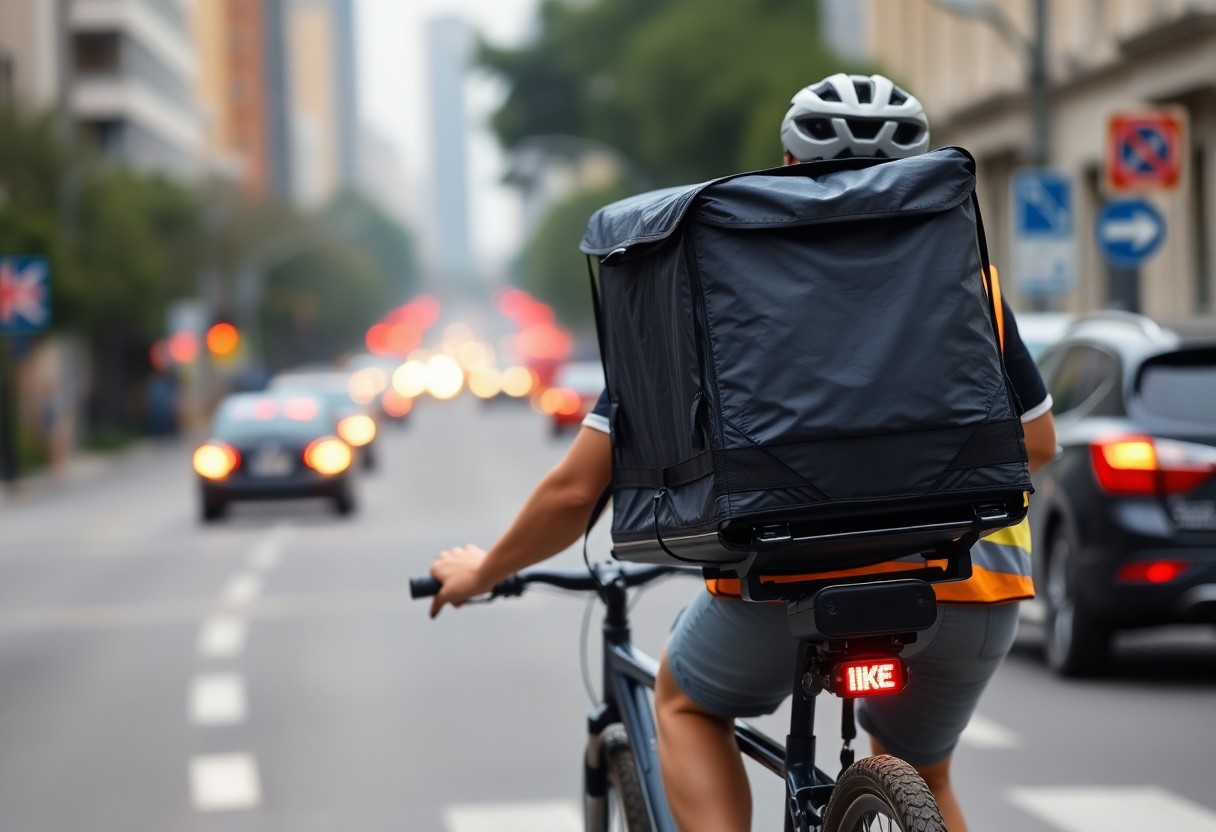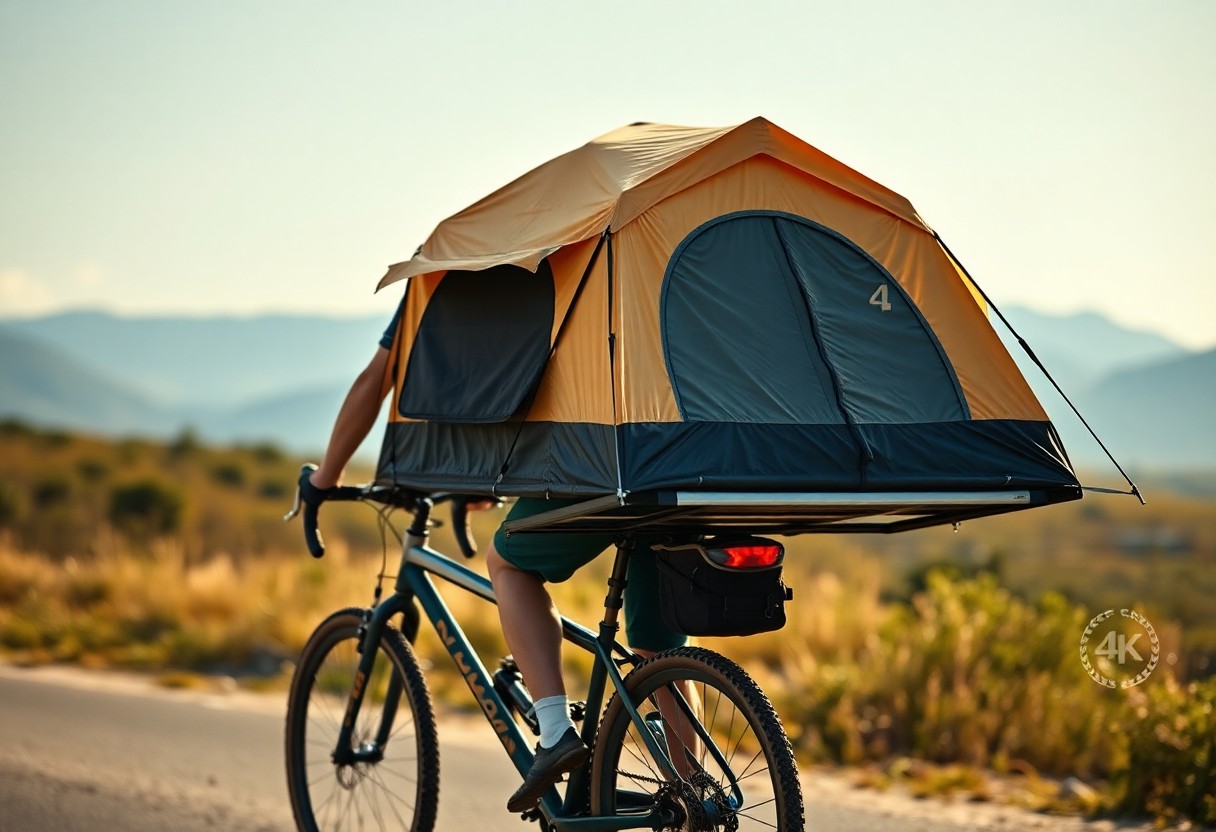This guide will help you transport your tent on your bike effectively and safely. By following these practical tips, you can achieve a balanced load that minimises the risk of accidents while cycling. Ensuring the tent is securely fastened and evenly distributed will enhance your stability as you ride. You’ll also learn about the best methods for attachment, making your bike trips with a tent not just feasible, but also enjoyable.
Selecting the Right Tent for Bike Travel
Your choice of tent can significantly impact your cycling experience. Opt for lightweight, compact tents that can easily fit into your panniers or be secured to your bike frame. Look for features like easy setup, durability, and waterproof material to ensure comfort and protection during your adventure. Additionally, selecting a tent that accommodates your needs, such as spaciousness for storage or sleep, is vital for a pleasant camping experience.
Assessing Size and Weight Considerations
Every gram counts when you’re biking, so assess the size and weight of your tent carefully. Lightweight tents typically weigh between 1.5 to 3 kg, striking a balance between durability and portability. Not only does reducing weight enhance your biking efficiency, it also keeps your centre of gravity low—helping you maintain stability on uneven terrains or during quick manoeuvres.
Identifying Tent Shapes That Enhance Aerodynamics
Choosing a tent shape that promotes aerodynamics can enhance your cycling experience. Options like dome or tunnel-shaped tents reduce wind resistance, while more angular designs may catch the wind and destabilise your ride. A streamlined profile, positioned parallel to the direction of travel, minimises drag, allowing you to cycle with less effort and greater stability.
For instance, dome tents feature curved profiles that deflect wind, providing stability in various weather conditions. This design typically uses fewer poles, leading to lighter constructions. Alternatively, tunnel tents are elongated, allowing for a flatter shape against the wind, further reducing drag. Selecting a tent that promotes such aerodynamic qualities can save energy during your ride, ultimately making your journey more enjoyable.
Optimal Carrying Methods for Stability
Achieving balance while carrying a tent on your bike is vital for a smooth ride. Focus on distributing weight evenly to maintain stability while navigating various terrains. Attaching your tent securely while utilising the right methods can enhance your overall cycling experience. Adopting optimal carrying methods not only prevents shifting but also ensures your bike’s handling remains unimpeded during your journey.
Harnessing Panniers and Frame Bags
Panniers and frame bags are effective tools for transporting your tent, allowing you to utilise bike space efficiently. Panniers, typically mounted on either side of your rear rack, provide an excellent balance point for heavier items. Pack the bulk of your tent into the panniers, while smaller components can fit into frame bags on your top tube or down tube for added stability. Ensuring everything is securely fastened will keep your load balanced, minimising the chance of swaying as you ride.
Exploring Rack and Strap Systems
Rack and strap systems offer a versatile way to secure your tent to your bike while maintaining balance. You can attach a strong rear rack to distribute the weight evenly across your bike’s frame. Use adjustable straps or bungee cords to secure the tent tightly against the rack, ensuring it won’t shift during transit. Make certain the tent is not wider than your handlebars to avoid any interference while navigating through narrow paths and turns. A well-anchored system can enhance your confidence on the road, allowing for a more relaxed ride.
Balancing Techniques for a Steady Ride
Mastering the art of balance while cycling with a tent requires specific techniques that enhance stability and control. You can improve your ride by integrating various methods, such as optimising your load placement, adjusting your posture, and utilising your bike’s gearing effectively. Emphasis on maintaining an upright position and shifting your weight appropriately ensures a smooth and safe journey, allowing you to navigate everything from gentle paths to rough terrain without losing your equilibrium.
Centre of Gravity Awareness
Being aware of your centre of gravity plays a vital role in maintaining balance. When you carry your tent, ensure it is positioned as low as possible and near the bike’s frame. This positioning helps keep your centre of gravity stable. If the tent is carried high or far from the frame, it may cause you to sway or lose control, especially during turns or while riding over uneven surfaces.
Adjusting Riding Posture for Improved Control
Your riding posture significantly influences your ability to steer and maintain balance. Leaning slightly forward can enhance your balance by lowering your centre of gravity, allowing for better control when navigating obstacles. Keeping your elbows slightly bent and hands relaxed on the handlebars provides added flexibility to respond quickly to changes in terrain or direction. This dynamic posture not only improves stability but also enhances overall riding endurance, allowing you to tackle longer distances comfortably.

Safety Protocols While Cycling with Gear
Adhering to safety protocols ensures not only your wellbeing but also enhances your cycling experience. Always wear a well-fitted helmet to protect your head, and ensure your bike is equipped with reflective materials for increased visibility. Distributing weight evenly is key—keep the load compact and balance it between the front and rear for steady handling. Incorporating lights and signalling clearly to other road users enhances safety further, preventing accidents and promoting a smooth ride.
Visibility and Notification Measures
Enhancing your visibility is vital, especially in low-light conditions. Equip your bike with front and rear lights, and utilise a reflective vest or jacket to stand out to motorists and pedestrians. Additionally, use hand signals when turning or stopping to alert others of your intentions on the road, further ensuring a safe cycling environment.
Emergency Preparedness on the Road
Being prepared for emergencies can make all the difference during your journey. Carry a basic repair kit containing tools for fixing flat tyres, loose components, or any unexpected mechanical failures. Ensure you have a mobile phone for quick communication, as well as a portable battery charger for long rides. Familiarising yourself with basic first aid can also aid in managing minor injuries should they arise.
Emergency preparedness is about planning for the unexpected. Before setting out, have a contingency plan in place; know the locations of nearby bike shops or repair services along your route. Always inform a friend or family member of your itinerary, especially for longer trips. Additionally, consider downloading offline maps to prevent losing your way in remote areas. In the event of a breakdown, having sufficient provisions such as water, snacks, and a small first aid kit can provide comfort and aid in lasting through the unexpected delay while awaiting assistance.
Training Your Body and Bike for Tent Carrying
Preparing your body and bike for transporting a tent involves a blend of physical conditioning and bicycle adjustments. Start by developing your core muscles to enhance your overall stability while riding. Additionally, get your bike fitted with the right gear and balance features to accommodate extra weight. Familiarising yourself with both your body and your bike will significantly improve your confidence and control when you hit the trails.
Building Core Strength and Balance
Core strength is vital for maintaining stability on the bike, especially when carrying additional weight. Engaging in activities like planks, sit-ups, and yoga can develop the muscles that support your spine and improve your balance. For instance, dedicating just 15 to 20 minutes a day to these exercises can lead to noticeable enhancements in your riding posture and comfort during longer rides with a tent attached.
Practising with Added Weight
Incorporating added weight during your practice sessions helps acclimatise your body and bike to the extra load. Start with lighter items, such as filled water bottles or a weighted backpack, and gradually increase the heft as you grow more comfortable. This simulation not only helps you adapt physically but also enables you to adjust your riding technique, ensuring that your handling remains secure even under pressure.
Focus on varying the weight distribution as you practise. For example, try placing the extra weight on the front rack one day and on the rear pannier the next. This will help you understand how different loads affect your bike’s balance and adjustments needed for smoother handling. Regular practice with weight will develop your muscle memory and enhance your confidence in carrying your tent on your bike.
Final Words
On the whole, ensuring you carry your tent on your bike without losing balance involves careful consideration of weight distribution and secure attachment. Choose a lightweight tent and optimally position it on your bike, ideally low and centred. Utilise proper straps and ensure everything is tightly secured to minimise movement. Regularly check your load during your journey to maintain stability. By taking these steps, you can enjoy a smooth ride while carrying your gear safely.
